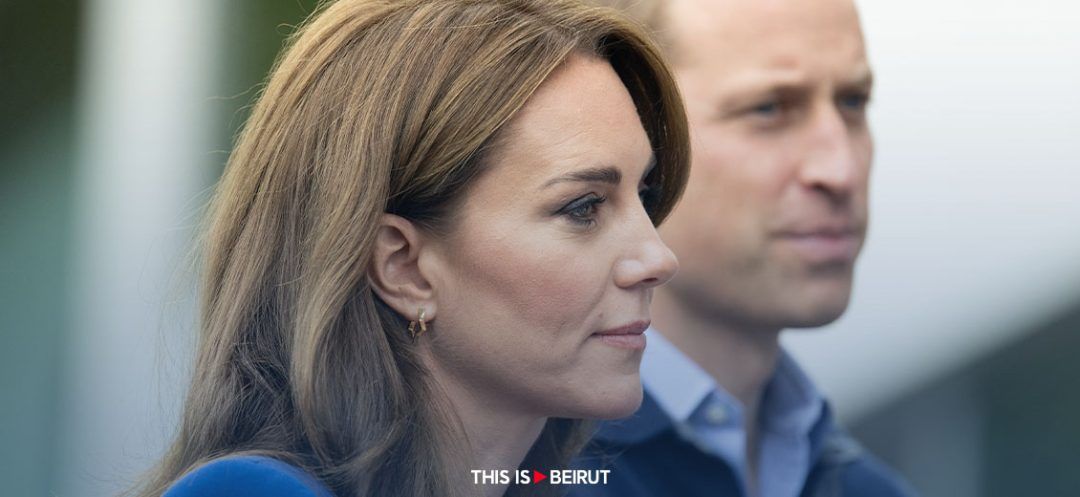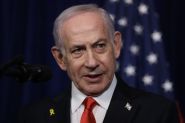- Home
- Middle East
- The Mystery of Kate Middleton: A New Monarchical Crisis?

"Where has our Princess of Wales disappeared to?" is undoubtedly the most asked question by British people lately. With Kate Middleton's admission to the hospital on January 16 for an abdominal operation, and especially after the publication of a doctored image on the occasion of British Mother's Day on March 10, conspiracy theories are gaining momentum day by day. Among them, some of the most ludicrous allegations include her husband, Prince William, orchestrating her assassination, or an abduction orchestrated by none other than the British fictional character Willy Wonka. Nevertheless, on Sunday night, rumors reached their climax, even claiming that the BBC had been informed by Buckingham Palace of an imminent royal announcement of paramount importance, with flags already at half-mast in the streets of London. All these allegations, obviously unfounded, nevertheless continue to fuel the currents of social media, particularly on X (formerly Twitter). But what is truly happening around the Princess of Wales?
'I Must Be Seen to Be Believed'
One of Queen Elizabeth II's flagship slogans was, "I must be seen to be believed." Yet communication from Kensington Palace has remained very vague in recent months regarding the health of the future queen, who is adored by her people. The dissemination of the doctored photo has sparked discontent. Reactions have emerged from all corners of the United Kingdom, from both monarchists and republicans, all calling for the ability to trust the royal family once again. Indeed, trust, integrity and continuity are precious to the British people. The public adores the royal family, but this adoration historically rests on the foundation of truth-telling. King Charles III's communication strategy since the announcement of his cancer diagnosis has been flawless, unlike the repeated errors from the Palace concerning Kate Middleton.
Moreover, it is the very foundations established and consolidated by the late monarch that are now being tested. Renowned for her unwavering sense of duty, the reassurance she inspired in her people, and the continuity she guaranteed to her realm, Elizabeth II was a unifying figure universally revered. However, today, a sentiment is felt that had not been experienced since the abdication of December 1936. Whether this sentiment is justified or not, the term "instability" is on everyone's lips, among many analysts. During the 70 years of the previous reign, the monarchy seemed eternal and unshakeable. As the former Queen rightly said, "More than just a family, the monarchy is an institution to which I have, in many ways, dedicated my life." In this institution, the monarch is its face. However, the direct line of succession are crucial figures, particularly the heir to the throne and his wife, the future queen.
Back On April 17?
Long perceived as a "transitional monarch" in view of his son William's succession, Charles III has inherited the deep sense of duty instilled by his late mother and has managed to establish a certain stability. However, this stability is now being questioned, tarnishing the reputation of the heir to the throne who was supposed to embody the continuity of the monarchy. Some critics also reproach the King for his lack of control over the situation as head of the family. In an article published in the pro-monarchy Daily Mail, Richard Kay, editorialist and staunch monarchist, warns the royal family, emphasizing that "it is still possible for unpopularity to wane, but the price paid in terms of image and reputation has been exorbitant."
Now, Kensington Palace is attempting to change its communication strategy by disclosing certain information to the British press about the princess's possible return. It is customary in the United Kingdom for the royal family to reach a tacit agreement with national media to grant some freedom to its members. Hence, concurrently with the publication by British daily The Sun of a video of the Prince and Princess of Wales strolling near their Windsor home, the Palace provided information to British daily Times of London about the organization of a "soft return" of the princess's royal engagements. According to the Sunday Times, she is not expected to return to public life before April 17, the date of the royal children's return to school. However, despite the efforts, conspiracy theories continue to circulate, sometimes even surpassing ridicule.
If the monarchy has experienced much more trying days—notably the abdication of December 1936—technological fervor and the digital age no longer allow the persistent ambiguity surrounding the health of a future queen. Kensington Palace's communication strategy should thus be rethought to try, as best as possible, to regain control of a situation that has greatly deteriorated. Conspiracies are likely to continue until a clear answer is obtained to the predominant question: "What happened to Kate Middleton?"
This time, it is the very foundations of the monarchy, namely the trust and stability it should inspire, that are being questioned. The mission of the royal family—especially of the Prince and Princess of Wales—is now to regain the people's trust, and it is up to the King to ensure its realization, as he is responsible for preparing his son for his future responsibilities and passing on the torch.
'I Must Be Seen to Be Believed'
One of Queen Elizabeth II's flagship slogans was, "I must be seen to be believed." Yet communication from Kensington Palace has remained very vague in recent months regarding the health of the future queen, who is adored by her people. The dissemination of the doctored photo has sparked discontent. Reactions have emerged from all corners of the United Kingdom, from both monarchists and republicans, all calling for the ability to trust the royal family once again. Indeed, trust, integrity and continuity are precious to the British people. The public adores the royal family, but this adoration historically rests on the foundation of truth-telling. King Charles III's communication strategy since the announcement of his cancer diagnosis has been flawless, unlike the repeated errors from the Palace concerning Kate Middleton.
Moreover, it is the very foundations established and consolidated by the late monarch that are now being tested. Renowned for her unwavering sense of duty, the reassurance she inspired in her people, and the continuity she guaranteed to her realm, Elizabeth II was a unifying figure universally revered. However, today, a sentiment is felt that had not been experienced since the abdication of December 1936. Whether this sentiment is justified or not, the term "instability" is on everyone's lips, among many analysts. During the 70 years of the previous reign, the monarchy seemed eternal and unshakeable. As the former Queen rightly said, "More than just a family, the monarchy is an institution to which I have, in many ways, dedicated my life." In this institution, the monarch is its face. However, the direct line of succession are crucial figures, particularly the heir to the throne and his wife, the future queen.
Back On April 17?
Long perceived as a "transitional monarch" in view of his son William's succession, Charles III has inherited the deep sense of duty instilled by his late mother and has managed to establish a certain stability. However, this stability is now being questioned, tarnishing the reputation of the heir to the throne who was supposed to embody the continuity of the monarchy. Some critics also reproach the King for his lack of control over the situation as head of the family. In an article published in the pro-monarchy Daily Mail, Richard Kay, editorialist and staunch monarchist, warns the royal family, emphasizing that "it is still possible for unpopularity to wane, but the price paid in terms of image and reputation has been exorbitant."
Now, Kensington Palace is attempting to change its communication strategy by disclosing certain information to the British press about the princess's possible return. It is customary in the United Kingdom for the royal family to reach a tacit agreement with national media to grant some freedom to its members. Hence, concurrently with the publication by British daily The Sun of a video of the Prince and Princess of Wales strolling near their Windsor home, the Palace provided information to British daily Times of London about the organization of a "soft return" of the princess's royal engagements. According to the Sunday Times, she is not expected to return to public life before April 17, the date of the royal children's return to school. However, despite the efforts, conspiracy theories continue to circulate, sometimes even surpassing ridicule.
If the monarchy has experienced much more trying days—notably the abdication of December 1936—technological fervor and the digital age no longer allow the persistent ambiguity surrounding the health of a future queen. Kensington Palace's communication strategy should thus be rethought to try, as best as possible, to regain control of a situation that has greatly deteriorated. Conspiracies are likely to continue until a clear answer is obtained to the predominant question: "What happened to Kate Middleton?"
This time, it is the very foundations of the monarchy, namely the trust and stability it should inspire, that are being questioned. The mission of the royal family—especially of the Prince and Princess of Wales—is now to regain the people's trust, and it is up to the King to ensure its realization, as he is responsible for preparing his son for his future responsibilities and passing on the torch.
Read more




Comments